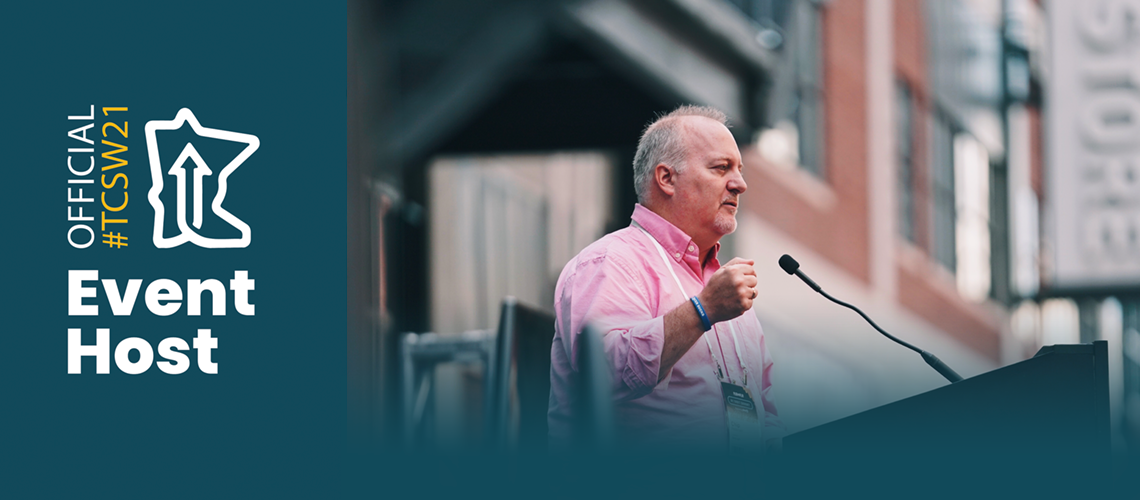Chip Pedersen has over 30 years of experience managing software projects. In that time, he’s seen a few consistent red flags that show your project might be in trouble.
At Twin Cities Startup Week, he’ll discuss 11 clues you should be wary of. “The main reason I submitted this presentation is that building software is hard! You’ll always run into something. I wanted to take my knowledge of shipping hundreds of software projects and give back.”
As a sneak peek, he’ll clue you in to one problem: Feature Creep.
What Is Feature Creep?
You might go into a project with a few key features in mind. Within the development process, you soon find the number of features required mounting higher and higher, going beyond the original scope. That’s feature creep.
Why should you fear feature creep? More features = more labor, time and risk to your schedule. “Feature creep can lead to crunch and team burnout,” Chip says.
Ways to Avoid Feature Creep
Chip recommends bringing up specific questions before you start any development. This will help you focus on what is important:
- What do I need to show my investors?
- What features are people willing to pay for?
- What are you trying to prove?
- Are you solving people’s problems?
- Do you enjoy using it?
Another important solution is to get early feedback from users. “It’s important to get your MVP out and into your users hands as soon as possible. This is where you will get your best feedback,” Chip tells us.
In his experience, users may surprise you: “We designed two games that were releasing at the same time. One game, we thought would make money from users watching ads. The second game we thought we would make money through microtransactions. When the games were released, the revenue model was flip-flopped. People we thought would play and watch ads were buying coins, and vice versa. Instead of fighting it, we reversed our strategy for both games. Your users can tell you a lot, so it’s important to get it in their hands. If you keep adding features, or more polish you are delaying getting your MVP out there.”
Additionally, If you are building a version 1 project, avoid getting in a features war to “keep up” with competitors.
“I was put in a situation where I had to create the first hockey game for the original XBox. EA had been working on their hockey game for years. We realized that if we wanted to ship on schedule we wouldn’t have parity with EA in our first year,” Chip remembers.
“You can go up against something established, but you need to focus on the features which show how you’re different or better than your competitor. Remember: all those additional features can come later. You can always make your app better. But if you get out the gate as another clone, it’s hard to stand out.”
Chip conceptualizes your first features as being like the ordering menu at a classic Chinese restaurant. “Every item is a la carte. It costs you something. Bring your costs down by figuring out the three items people like best. Then add to the menu bit by bit: rolling thunder.”
So, when should you add features? Once you launch, Chip recommends listening to your customers, scheduling your next set of features and getting into a regular release schedule of updates. “Facebook does that, Instagram does that – and that’s the cadence you should be getting into, even if you are small,” says Chip.
So, You’re Dealing With Feature Creep. What Next?
“Stop and sharpen the saw. – that’s what I like to say. I like to huddle the team up and look at where we are at in the schedule, what features we have, what features still remain. You then need to go through and determine what are the must have features. If something goes in, something has to come out. You’ll realize some things are just nice to have, and not important. There are cases as you develop your product when a great idea or feature will surface, and you’ll want to make hard tradeoffs to make space for it.”
Chip also recommends keeping the mindset that you’ll probably have to “kill your darlings” – don’t get too attached to certain features. “I once worked on an MVP where they listed 110 must-have features for their MVP. That is a full product not an MVP. It was so hard to cut down that list. You need to be able to put them ‘in the freezer.’ They’re not going away – you’re prioritizing. When you build your house, you need the foundation. We had to get that feature list down to something manageable rather than 110. That took a month!, but it saved a lot of time and money before any software production started.”
Find more insight from Chip’s experience at Twin Cities Startup Week! Chip will share 11 Clues That Your Project Might Be In Trouble. Chip’s session will be held on Wednesday, September 22nd-10:30 am – 11:30 am.
